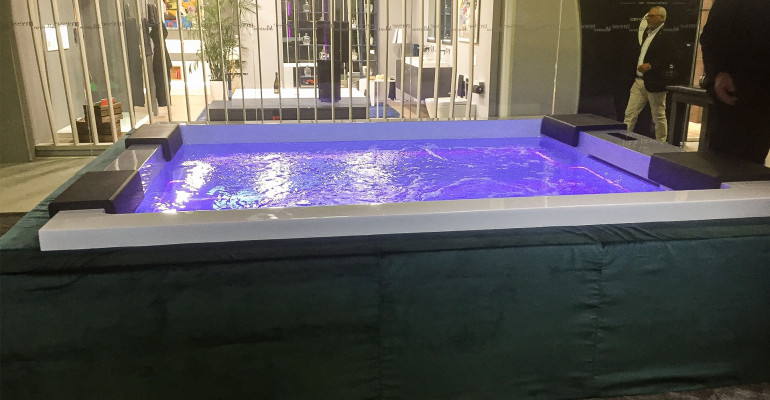
The appointment with Cersaie is an unmissable event in our professional diary. An explorative visit that every year permits us to discover the latest in materials, practices, and techniques regarding a topic that never ceases to enthuse us: the house of the future.
One of the most interesting things is to see how the future continues to change, year on year, making us more exigent and exploring new trends and tastes.
Thirty years ago – just think of Ugo La Pietra and his smart home – screens were the visionary protagonists of living. Barely ten years back, future homes were seen as mobile, lightweight units like a snail’s shell. And today?
Considering that many of the intuitions over the years, in which progress has proceeded at ever increasing speed, have been prescient and farsighted, if we were to give a contemporary definition of the house of the future, the best description would be that we have entered the era of consciousness.
Two strong tendencies confirm this from among the thousands proposed in a fair of this importance.

In this year the first trend regards the vigorous rediscovery of naturalness in materials that due to previously inconceivable methods and technology are now increasingly easy to find and use in a project. Ease of use and, in many cases, no longer prohibitive costs straddle a tendency that will probably grow even further in the near future, reserving many interesting surprises for designers open to innovation, especially if they are able – as is already happening – to conjugate ethics and aesthetics in synergy and equilibrium.

The second big tendency is towards efficiency in the use of space, consumption and in the interest of sustainability in contemporary living. We are talking about urban and metropolitan spaces, of course, that are shrinking in dimension and extension while offering an unprecedented degree of comfort and livability. But we are also talking about high quality domestic life that needs less power, less energy, less water. And everything in a scenario of such vast and complex possibilities that every project designer has freedom and rationality across the board.
In other words, the house of the future practically already exists, but besides the vision and imagination of yore, today it is a conscious house. At its center remain the functions of millenniums past: protecting its inhabitants, allowing the little community that lives there to grow, providing comfort for all primary needs, and, not least, representing the personality and condition of whoever has bought, commissioned or renovated it. And all of this without giving up another unchanging objective: expenses that are reasonable and – also here – ever more conscious.
by Ilenia Girolami
Read this article too



